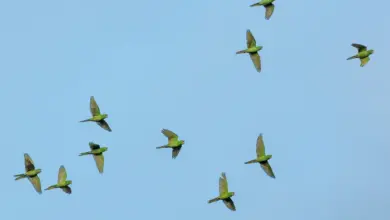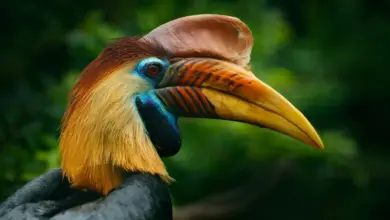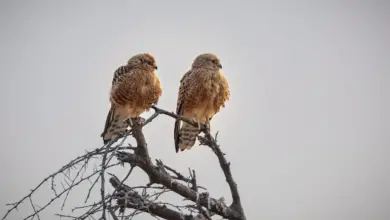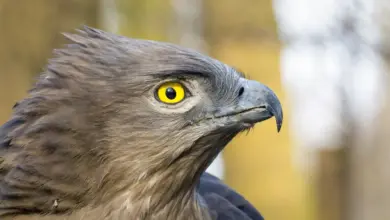Greater Racket-tailed Drongos
The Greater Racket-tailed Drongos, Dicrurus paradiseus, is a medium-sized Asian bird which is distinctive in having elongated outer tail feathers with webbing restricted to the tips. They are placed along with other drongos in the family Dicruridae.
They are conspicuous in the forest habitats often perching in the open and attracting attention with a wide range of loud calls that include perfect imitations of many other birds.
It has been suggested that these imitations may help in the formation of mixed-species foraging flocks, a feature seen in forest bird communities where many insect feeders forage together.
These drongos will sometimes steal insect prey caught or disturbed by other foragers in the flock.
They are diurnal but are active well before dawn and late at dusk.
Owing to their widespread distribution and distinctive regional variation, they have become iconic examples of speciation by isolation and genetic drift.
Distribution / Range
The drongos are passerines restricted to the Old World (Europa, Asia, and Africa) tropics.
The Greater Racket-tailed Drongos is a resident breeder in tropical southern Asia from Kashmir, India, and Sri Lanka east to Indonesia.
This species is usually found in broadleaved forests.
Description / Sub-species IDs
In most of its range in Asia, Greater Racket-tailed Drongos is the largest of the drongo species and is readily identifiable by the distinctive tail rackets and the crest of curled feathers that begin in front of the face above the beak and along the crown to varying extents according to the subspecies.
The tail with twirled rackets is distinctive and in flight, it can appear as if two large bees were chasing a black bird. In the eastern Himalayas, the species can be confused with the Lesser Racket-tailed Drongo, however, the latter has flat rackets with the crest nearly absent.
This widespread species includes populations that have distinct variations and several subspecies have been named.
The nominate form is found in southern India, mainly in forested areas of the Western Ghats and the adjoining hill forests of peninsular India.
The subspecies in Sri Lanka is ceylonicus which is similar to the nominate form but slightly smaller. The Sri Lankan form Lophorinus used to be treated as a subspecies due to the suggestion that it formed hybrids with Ceylonicus is considered a separate species in newer taxonomic treatments based on their overlapping ranges.
The subspecies found along the Himalayas is grandis which is the largest and has long glossy neck hackles.
The Andaman Islands form otiosus has shorter neck hackles and the crest is highly reduced while the Nicobars Island form nicobariensis has a longer frontal crest and smaller neck hackles than otiosus.
Specimens of the nominate form have sometimes been confused with lophorinus. Considerable variation in the shape of the bill, extent of the crest, hackles, and tail rackets exists in the island populations of Southeast Asia.
The Bornean brachyphorus (=insularis), and banguey of Banggai lack crests (banguey has frontal feathers that arch forwards) while very reduced crests are found in microlophus (=endomychus; Natunas, Anambas, and Tiomans) and platurus (Sumatra).
Several forms are known along the Southeast Asian islands and mainland including formosus (Java), hypoballus (Thailand), rangoonensis (northern Burma, central Indian populations were earlier included in this), and johni (Hainan).
Young birds are duller and can lack a crest while moulting birds can lack the elongated tail streamers. The racket is formed by the inner web of the vane but appears to be on the outer web since the rachis has a twist just above the spatula.
Calls / Vocalization
Their calls are extremely varied and include monotonously repeated whistles, metallic and nasal sounds as well as more complex notes and imitations of other birds. They begin calling from as early as 4 a.m. in moonlight often with a metallic tunk-tunk-tunk series.
They can accurately mimic the alarm calls of other birds that are learned through interactions in mixed-species flocks. This is quite unusual, as avian vocal mimicry has hitherto been believed to be ignorant of the original context of the imitated vocalization.
African Grey Parrots are known to use imitated human speech in the correct context but do not show this behaviour in nature. This drongo’s context-sensitive use of other species’ alarm calls is thus analogous to a human learning useful short phrases and exclamations in several foreign languages.
A special alarm note is raised in the presence of Shikras that has been transcribed as a loud kwei-kwei-kwei…shee-cuckoo-sheecuckoo-sheecuckoo-why!.
They have been said to imitate raptor calls to alarm other birds and steal prey from them in the ensuing panic. They are also known to imitate the calls of species (known sometimes even to fluff up and move head and body like a Jungle Babbler) that typically are members of mixed-species flocks such as babblers and it has been suggested that this has a role in the formation of mixed-species flocks.
Diet / Feeding
Like other drongos, these feed mainly on insects but also feed on fruits and visit flowering trees for nectar. Having short legs, they sit upright and are often perched on high and exposed branches. They are aggressive and will sometimes mob larger birds especially when nesting. They are often active at dusk.
In some places, they are kleptoparasitic (taking food from another bird) in others in mixed-species flocks, particularly Laughingthrushes but they are most often involved in mutualistic and commensal relations. Several observers have found this drongo associating with foraging woodpeckers and there is a report of one following a troop of macaques.
Breeding
The Greater Racket-tailed Drongos is a resident breeder throughout its range. The breeding season in India is April to August. Their courtship display may involve hops and turns on branches with play behavior involving dropping an object and picking it in mid-air.
Their cup nest is built in the fork of a tree and the usual clutch is three to four eggs. The eggs are creamy-white with blotches of reddish brown which are more dense on the broad end.
In culture
The common whistle note that is made leads to its local name in many parts of India of kothwal (which means a “policeman” or “guard”, who used a whistle that produced a similar note), a name also applied to the Black Drongo and in other places as the Bhimraj or Bhringaraj.
Before the 1950s, it was often kept in captivity by people in parts of India. It was said to be very hardy and like a crow, accommodating a varied diet.





